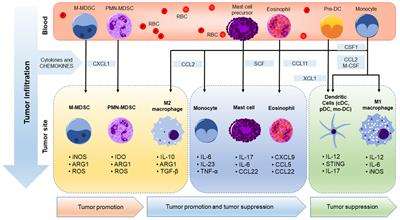Eye Movement Desensitization and Reprocessing (EMDR) Therapy
What is EMDR therapy?
Eye Movement Desensitization and Reprocessing Therapy (commonly called EMDR) is a mental health treatment that is based on physiological intervention rather than psychotherapy. EMDR is most commonly used as a technique for healing from trauma, and it involves thinking about your traumatic experience while a therapist simultaneously guides you through a series of physical eye movements. Because eye movements are thought to be neurologically linked to information processing in the brain, these physical motions can serve as an aid in working through difficult memories and emotions. The goal of EMDR is essentially to draw on physiological sensations to rewire your brain’s experience of a trauma and reduce the pain associated with it. Unlike more traditional forms of talk therapy, EMDR doesn’t require you to discuss your trauma in detail or even disclose the exact nature of it to your therapist.
Although EMDR treatment encompasses eight distinct phases that must be completed with a therapist’s guidance, the entire process can often be worked through relatively quickly. Some people seeking to work through a single trauma may complete EMDR treatment within just 3 or 4 sessions, while others working through more complex trauma may require longer treatment. EMDR can be used on its own or in conjunction with another modality such as psychodynamic therapy or cognitive-behavioral therapy.
In addition to trauma treatment, EMDR is also increasingly being used as a treatment for other mental health conditions such as anxiety, depression, and eating disorders, as well as other conditions that require a breakthrough, such as achieving one’s peak performance at work or addressing a stuck relationship dynamic.

Does EMDR work?
Yes, a growing body of research demonstrates that EMDR is an effective treatment for trauma.
A number of studies have shown that EMDR seems lead to benefits for individuals suffering from PTSD. Significant authorities on trauma treatment, including the US Department of Veterans Affairs, recommend EMDR as a treatment choice for sufferers of trauma.
One study found that EMDR was a safe and effective treatment for most clients in a group of adults suffering from PTSD, and another showed that it was associated with quick decreases in PTSD symptoms for most participants.
How does EMDR work?
Although a growing body of research demonstrates that EMDR is an effective treatment, there is not yet a clear consensus on exactly how it works. Most theories rest on the idea that trauma creates a rupture in the brain’s information processing capacities, which leads to the intense anxiety, fear, and flashbacks that characterize conditions like PTSD.
Accordingly, EMDR seems to work by stimulating both hemispheres of the brain (also called bilateral stimulation) while contemplating a trauma, thus building new neural pathways and clearing away the neurological blockage that are associated with the trauma.
Some practitioners also theorize that EMDR may replicate a dream state in the brain by mimicking the eye movements that occur during REM sleep. In this state, you may be able to access traumatic memories with more immediacy and so have an easier time rewiring your brain’s response to them. This same process of healing could occur over time through traditional talk therapy, but EMDR’s unique approach is thought to be a kind of neurological shortcut to effectively processing traumatic memories and reducing the negative emotions associated with them.
Structure of EMDR sessions
EMDR generally follows a set eight-phase structure, though the amount of time that it takes to work through these phases will depend on your particular needs and the treatment plan that you and your therapist agree upon.
Phase one: History-taking
In all cases, EMDR treatment begins with one or more sessions of preparation and information-gathering, in which you will work with your therapist to determine what you’d like to focus on treating. During this phase, you’ll tell your therapist a little about the trauma you want to process, as well as the thoughts and feelings that come up for you when remembering or contemplating that trauma. Note that while you may discuss your trauma in detail during this phase, you don’t have to do so; as long as your focus is clear to you, you can tell your therapist comparatively little. For example, you might tell your therapist: “It’s something that happened with my mom when I was a teenager,” or “I was in an accident last year.”
Phase two: Emotion regulation skill-building
Once you and your therapist have established goals for treatment, your therapist will work with you to develop some emotional regulation and relaxation skills, since the process of remembering trauma during EMDR sessions can be emotionally intense. Examples of these might include stress reduction techniques such as breathing exercises; grounding exercises such as feeling your feet on the floor; and imagery-based exercises, such as noticing objects in the room that are of a certain color. Equipping you with these skills allows the therapist to ensure you have the tools to feel grounded and reconnect with your body.
Phase three – six: Memory identification, stimulation, and desensitization
The majority of EMDR therapy focuses on addressing your traumatic memory. These EMDR techniques are sometimes known as desensitization. During this process, you’ll begin by focusing on the trauma you want to resolve and rating the intensity of your emotional reaction to it. This focus may be a visual memory, a negative thought or feeling, or a physiological sensation associated with the trauma. You’ll also likely pick a positive belief that you’d like to work toward internalizing.
Then, your therapist will guide you through a series of eye motions as you continue focusing on the trauma, usually by asking you to following their hand movements with your eyes, or light moving side to side across an electric rod specially made for EMDR therapy. These movements will generally alternate between left and right in order to stimulate both hemispheres of your brain. Sometimes, practitioners will use a different physiological cues, such as taps on your hands or a musical tone played in alternating ears, instead of or in addition to eye movements.
During this process, your job is to simply notice what happens to your thoughts, feelings, and bodily sensations as you follow the therapist’s guidance. You’ll stop at regular intervals to describe your experience and rate the intensity of your reaction to the trauma, and your therapist will reevaluate the situation frequently and guide you in changing your focus as necessary. You’ll repeat versions of this process until you no longer experience distress when contemplating the trauma and can instead focus on the desired positive belief.
Phase seven and eight: Documenting between sessions & assessing progress
Most sessions will end with a discussion of your experience, and many practitioners will also ask you to keep track of your related thoughts and feelings between sessions in order to track your progress and guide your work in sessions. This can also be a useful way to practice the grounding techniques your therapist taught you early on.
As with most therapy modalities, you will assess progress made with your therapist and continue to reevaluate treatment goals and next steps.
What can EMDR help with?
Most of the research surrounding EMDR shows its effectiveness for PTSD and other trauma-related disorders. However, it is also increasingly being used as a treatment for anxiety, depression, eating disorders, phobias and other conditions that involve feeling stuck in negative emotions or beliefs.
What to look for in a practitioner for EMDR
EMDR practitioners may be social workers, psychologists, counselors, or other mental health professionals. While there is no specific credential that all EMDR practitioners must have, organizations including the EMDR International Association and the EMDR Institute offer certifications programs in this modality. In addition to having an advanced degree and a valid license, you’ll want to make sure that your therapist has a certification from one of these organizations or else a comparable level of advanced, specialized training and experience in EMDR.
Does insurance cover EMDR?
Yes, if your health insurance covers therapy, then it likely covers EMDR as part of trauma treatment. However, since many sessions of EMDR are longer than the standard 45-60 minutes, it is important to clarify with your insurance company whether they will cover longer sessions.
You can also ask the therapist in your initial call whether their EMDR services have been covered by health insurance in the past.
EMDR Therapy
Eye Movement Desensitization and Reprocessing (EMDR) is a psychotherapy approach designed to work with distressing or traumatic memories. Many psychological difficulties are the result of distressing life experiences which are not stored in your memory properly. These experiences are said to be unprocessed or blocked and need some help to become processed. EMDR is one way to accomplish that.
Negative emotions, feelings, and behaviors are generally caused by unprocessed or unresolved earlier experiences. The goal of EMDR therapy is to leave you with the emotions, understanding, and perspectives that will lead to healthy and useful behaviors and interactions. EMDR therapy helps your brain to process completely the experiences that are causing problems, and to include new ones that are needed for full health.
“Processing” does not mean talking about it. “Processing” means setting up a learning state that will allow experiences that are causing problems to be “digested” and stored appropriately in your brain. That means that what is useful to you from an experience will be learned, and stored with appropriate emotions in your brain, and be able to guide you in positive ways in the future. The inappropriate emotions, beliefs, and body sensations will be discarded.




